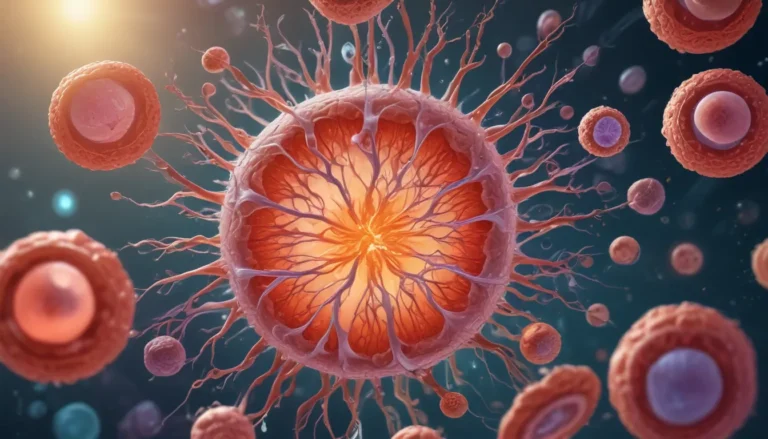A Note About Images: The images used in our articles are for illustration purposes only and may not exactly match the content. They are meant to engage readers, but the text should be relied upon for accurate information.
In the realm of biological marvels, few processes rival the extraordinary complexity and significance of aerobic respiration. This essential mechanism fuels the operations of our cells, providing the energy necessary for daily activities and sustaining life itself. By delving into the intricate pathways and reactions that constitute aerobic respiration, we can gain a profound appreciation for its role in powering our existence.
The Essence of Aerobic Respiration
Aerobic respiration stands as a cornerstone of biological processes, enabling living organisms to generate energy vital for their survival. Through a sequence of intricate biochemical reactions, this mechanism efficiently converts organic molecules like glucose into adenosine triphosphate (ATP), the primary energy currency within cells.
The Oxygen Connection
Central to aerobic respiration is the requirement for oxygen, a fundamental element that facilitates this process. Operating within specialized cell organelles known as mitochondria, often referred to as the “powerhouses” of the cell, aerobic respiration hinges on the presence of oxygen to proceed.
Navigating the Pathways of Energy Production
Aerobic respiration unfolds through a series of three key stages: glycolysis, the Krebs cycle (or citric acid cycle), and oxidative phosphorylation. These interconnected reactions break down glucose molecules, releasing energy and generating ATP to fuel cellular functions.
Unveiling the Byproducts
As aerobic respiration progresses through the Krebs cycle and oxidative phosphorylation, carbon dioxide emerges as a byproduct. This release plays a crucial role in maintaining the delicate balance of gases in the atmosphere, embodying the interconnected relationship between cellular processes and environmental dynamics.
Efficiency at Its Core
Noteworthy for its remarkable efficiency, aerobic respiration outshines other forms of cellular respiration by producing approximately 36-38 ATP molecules from a single glucose molecule. This high yield of energy empowers organisms to optimize their energy production capabilities.
Sustaining Endurance Through Aerobic Respiration
Crucial for endurance activities such as long-distance running and swimming, aerobic respiration provides a continuous supply of ATP that enables muscles to endure prolonged physical exertion. This endurance-supporting feature underscores the significance of aerobic respiration in facilitating sustained performance.
A Universal Phenomenon
Aerobic respiration transcends species boundaries, occurring ubiquitously in both plants and animals. By supplying the energy essential for growth, development, and physiological functions, this process serves as a vital commonality across diverse organisms.
Orchestrating Cellular Functionality
At its core, aerobic respiration interfaces with redox reactions that involve electron transfers between molecules. This intricate interplay not only regulates cellular metabolism but also maintains the delicate balance between oxidation and reduction, ensuring optimal cellular functionality.
Tracing Evolutionary Significance
The evolutionary trajectory of aerobic respiration has been pivotal in the development of complex life forms on Earth. Its role in enhancing energy production has empowered organisms to thrive and adapt across diverse environments, propelling the evolutionary process forward.
Concluding Insights
In conclusion, the captivating intricacies of aerobic respiration illuminate the transformative nature of this essential biological process. From the foundational stages of glycolysis to the dynamic mechanisms of the Krebs cycle and electron transport chain, each facet contributes to the intricate web of energy production within cells. Moreover, beyond its energy-generating role, aerobic respiration serves as a critical mechanism for waste product removal, safeguarding the optimal functioning of cells and tissues.
By unveiling the fascinating facts surrounding aerobic respiration, we embark on a journey of discovery that unveils the awe-inspiring complexities of life’s inner workings, showcasing the incredible adaptability of living organisms.
FAQs: Unraveling Key Queries
Q: What is aerobic respiration?
A: Aerobic respiration is a metabolic process through which cells convert glucose and oxygen into carbon dioxide, water, and ATP, serving as the primary energy source for cells.
Q: What are the primary stages of aerobic respiration?
A: The main stages consist of glycolysis, the Krebs cycle (citric acid cycle), and the electron transport chain, each contributing to the generation of ATP.
Q: How does oxygen factor into aerobic respiration?
A: Oxygen acts as the final electron acceptor in the electron transport chain, facilitating the efficient production of ATP within cells.
Q: Does aerobic respiration occur universally in living organisms?
A: While primarily observed in organisms with mitochondria, such as animals, plants, fungi, and certain protists, aerobic respiration transcends species boundaries.
Q: What sets aerobic respiration apart from anaerobic respiration?
A: Aerobic respiration necessitates oxygen for its processes, contrasting with anaerobic respiration that functions in the absence of oxygen. Anaerobic respiration typically yields less ATP and generates byproducts like lactic acid or ethanol.
Delving into the realms of cellular energy production unveils a tapestry of knowledge waiting to be unraveled. Explore the enchanting realms of the Krebs cycle, the allure of anaerobic respiration, and the marvels of the electron transport chain as nature’s intricate mechanisms for energy harnessing reveal themselves. Prepare to be astounded by the remarkable intricacies concealed within our cells.
Your Thought Matters
Our commitment to delivering engaging, trustworthy content is at the core of our mission. Each fact shared on our platform stems from contributions by real users like you, offering a diverse array of insights and information. With our dedicated editors rigorously reviewing submissions, you can trust in the authenticity and accuracy of the knowledge we share. Embark on a journey of exploration and learning with the assurance of quality and credibility guiding your path.






